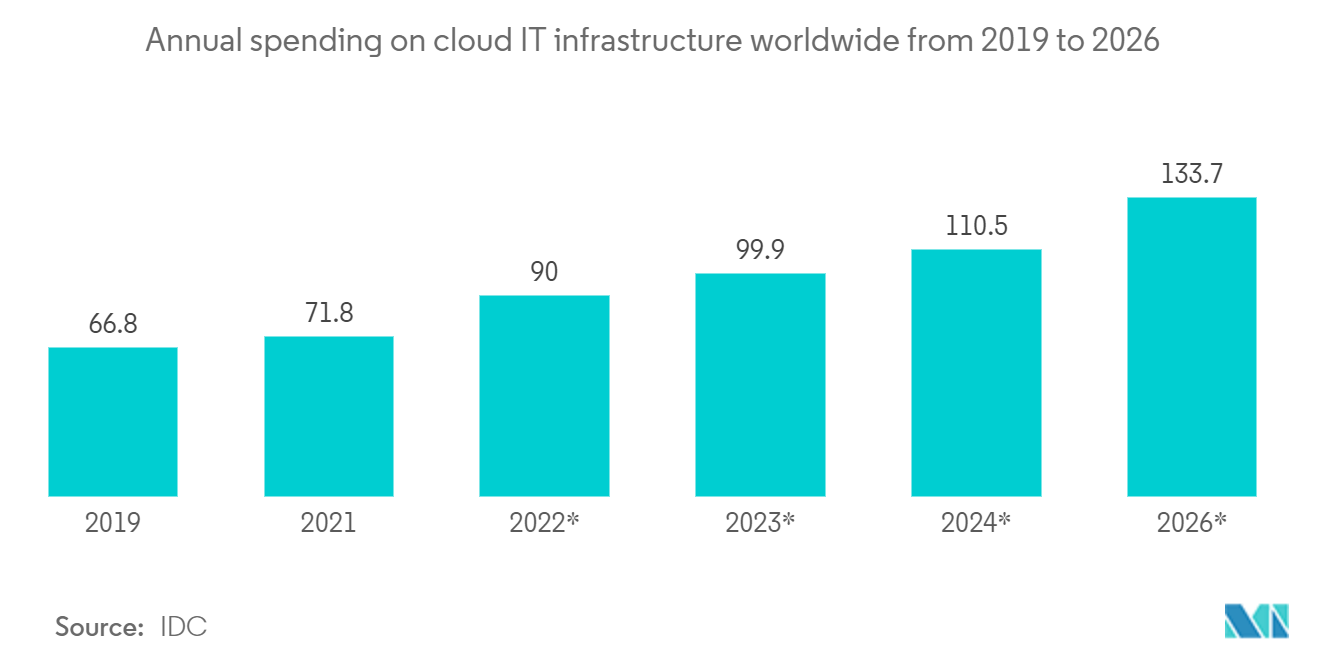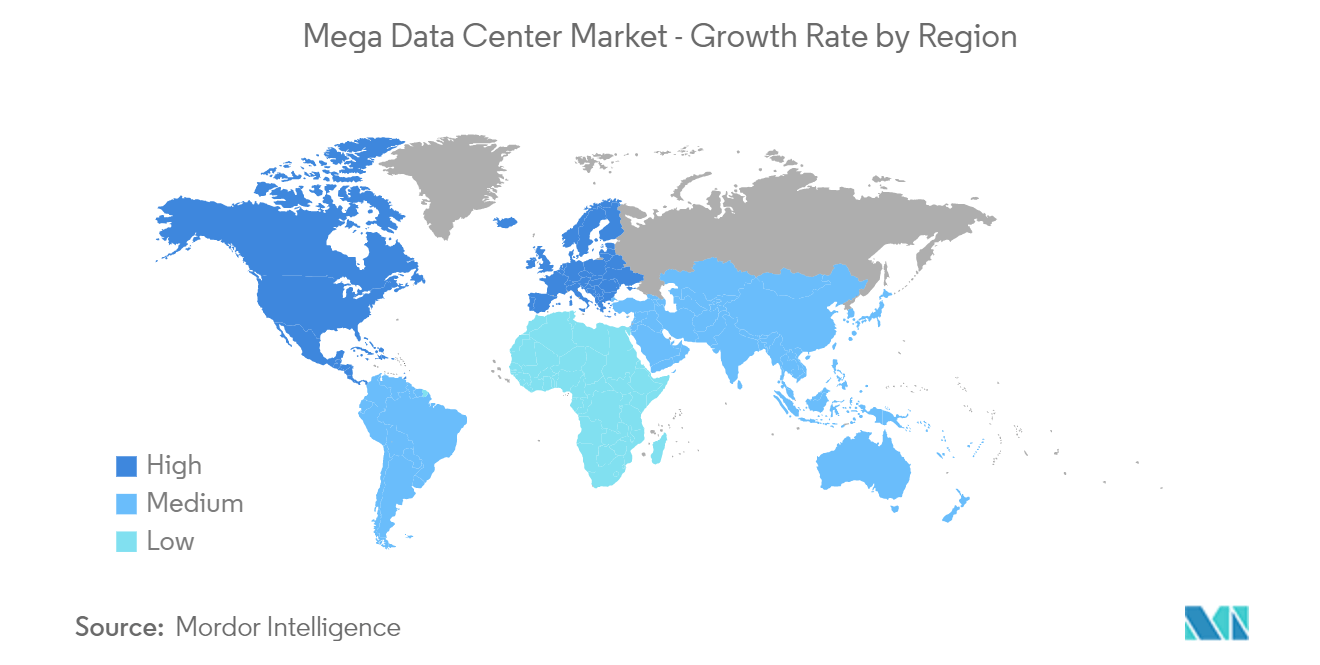Market Trends of Managed IT Infrastructure Services Industry
Technological Proliferation and Advancement of Cloud Based Technology Complement the Demand
- In the current market scenario, the increasing dependency on cloud services and infrastructure upgrading activities are the major factors driving the demand for managed IT infrastructure services. In fact, most of the infrastructure developments in the next few years are dedicated to supporting the increasing demand for cloud services.
- The landscape of IT infrastructure itself is changing rapidly. Traditional racks of servers stored in cages are quickly disappearing as more companies migrate most or all of their IT services and applications to the cloud. As a result, even investments in traditional IT infrastructure are expected to decline over the forecast period as companies increasingly invest in advanced cloud infrastructure.
- Moreover, according to the Cisco Global Cloud Index Report, more than 90 percent of all workloads will be cloud-based by this year. Global cloud traffic will represent 95 percent of total data center traffic. Whereas traditional data center workloads and compute instances are expected to decline during the same period. Historically, one server carried one workload and computed instance. But with increasing server computing capacity and virtualization, multiple workloads and compute instances per physical server are common in cloud architectures.

North America Region to Hold the Largest Market Share
- North America remains the largest market for managed IT infrastructure services because of the early adoption of technology and numerous IT data centers.
- North America has seen a dramatic increase in cloud migration over the years, mostly because of the region's strong IT infrastructure, laws, standards, and access to technological experience, among other factors. Additionally, the expansion of the cloud migration services market in North America has been aided by the existence of illustrious cloud firms like Amazon Web Services, IBM Corporations, Microsoft Corporation, Google, and Cisco Systems.
- The other factor is the high degree of automation and immense penetration of IT applications in several end-user industries, creating a constant demand for IT infrastructure services in the region.


